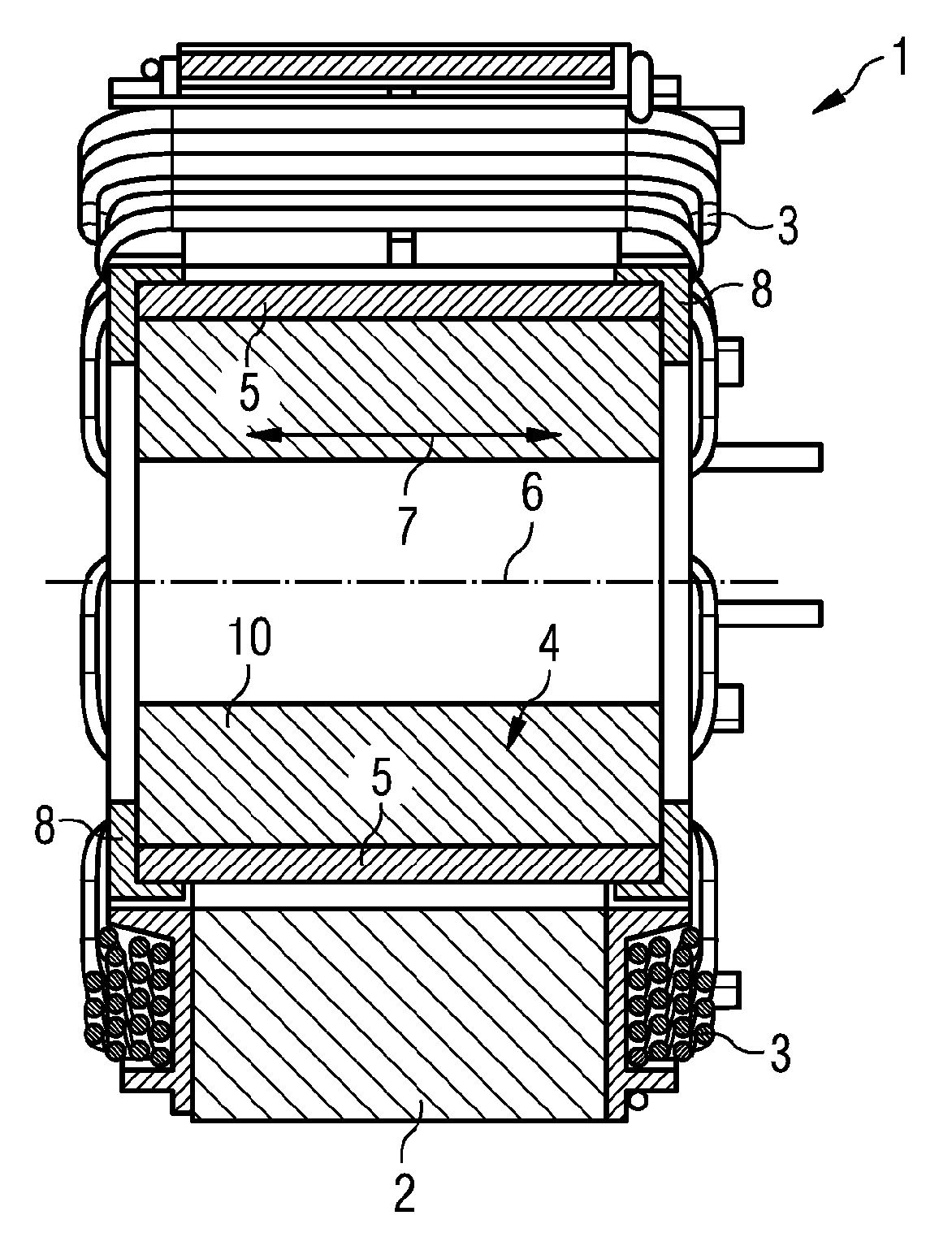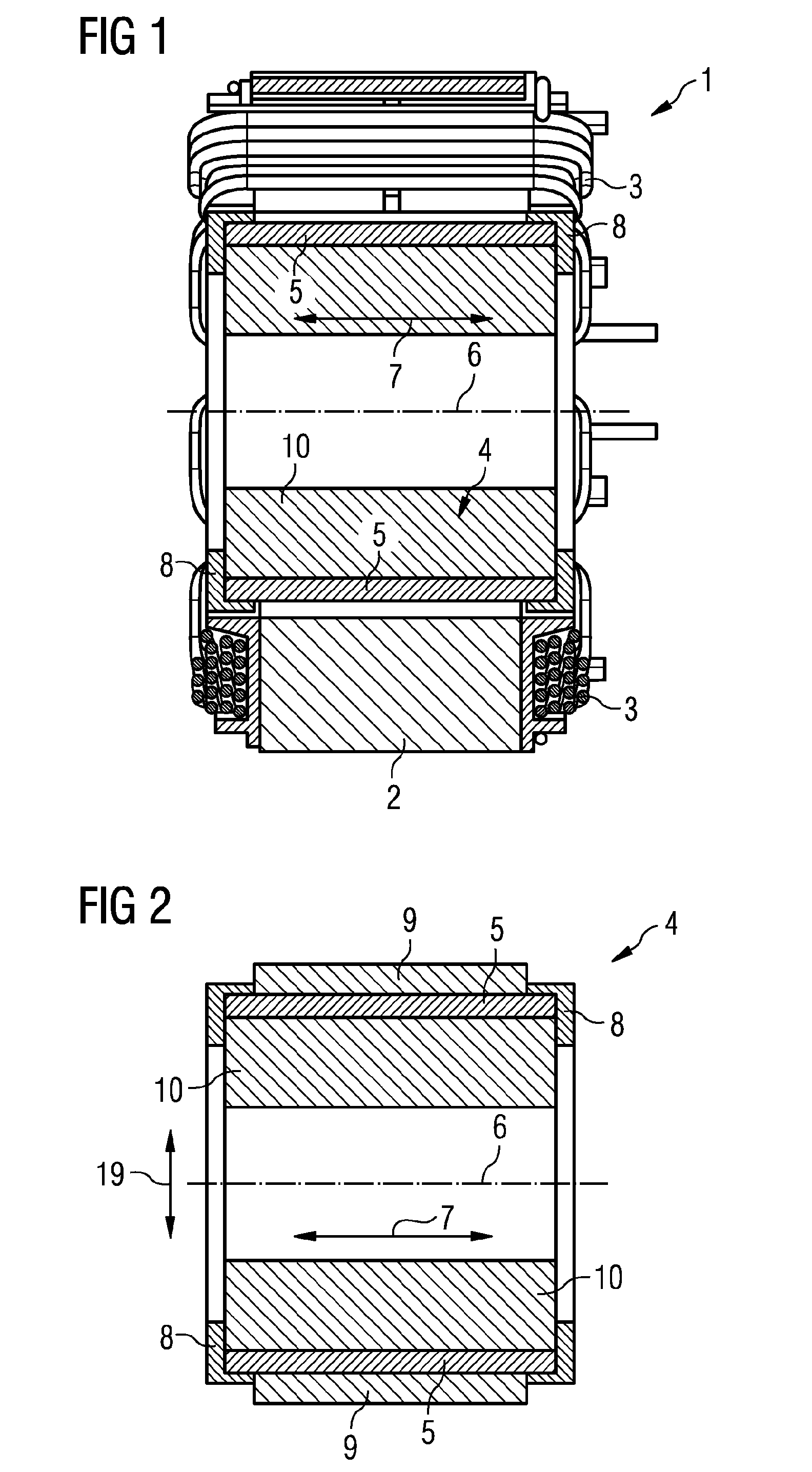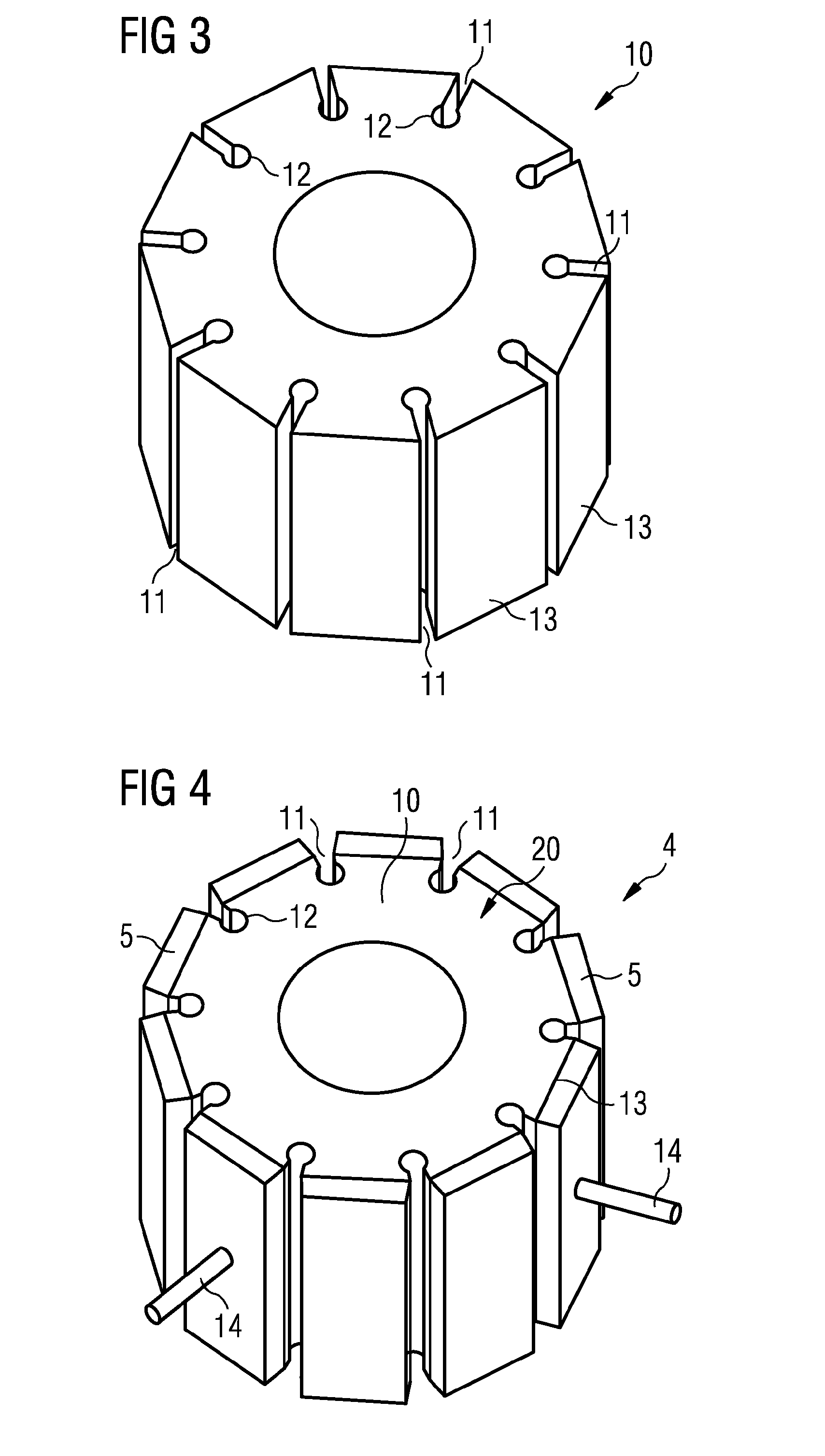Rotor
a technology for electric motors and rotors, which is applied in the direction of stator/rotor bodies, magnetic circuit rotating parts, magnetic circuit shape/form/construction, etc. it can solve the problems of difficult and therefore costly process, difficult to hold the permanent magnet elements exactly in position during injection molding operation, etc., to achieve high resistance and position stability securing, increase the efficiency of electric motors and therefore performance, and cost-effective production
- Summary
- Abstract
- Description
- Claims
- Application Information
AI Technical Summary
Benefits of technology
Problems solved by technology
Method used
Image
Examples
Embodiment Construction
[0023]FIG. 1 shows an electric motor 1 with a stator 2 and with a rotor 4. Electric motor 1 may be a reluctance motor, as it is known. Coils 3 are attached to the stator 2 and can be subjected to a commutated electrical current whereby a magnetic alternating field can be generated. The rotor 4 is mounted rotatably on an axis 6 and has a basic body 10 and permanent-magnetic elements 5. These permanent-magnetic elements 5 are held on the basic body 10 by a joining sleeve 9 and a locking element 8 (FIG. 2). The arrow indicates the axial direction 7 in which, for example, the joining sleeve 9 can be pushed onto the basic body 10. The permanent-magnetic elements 5 are of parallelepipedal form, this being especially cost-effective. However, they may also be of shell-shaped form.
[0024]The set-up of the rotor 4 is illustrated in more detail in FIG. 2. A multiplicity of permanent-magnetic elements 5, which are arranged on the cylindrical outer surface of the basic body 10, are shown. The per...
PUM
 Login to View More
Login to View More Abstract
Description
Claims
Application Information
 Login to View More
Login to View More - R&D
- Intellectual Property
- Life Sciences
- Materials
- Tech Scout
- Unparalleled Data Quality
- Higher Quality Content
- 60% Fewer Hallucinations
Browse by: Latest US Patents, China's latest patents, Technical Efficacy Thesaurus, Application Domain, Technology Topic, Popular Technical Reports.
© 2025 PatSnap. All rights reserved.Legal|Privacy policy|Modern Slavery Act Transparency Statement|Sitemap|About US| Contact US: help@patsnap.com



